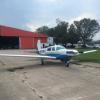Hangar Project - Oxygen Filling Setup
-
Members Online
- Perri Dyer
- Ragsf15e
- TravelingIA98
- AviatoRob
- TCC
- NevaNicky
- Igor_U
- ad5ut
- mmcdaniel33
- Aerodon
- donkaye, MCFI
- Aaviationist
- FlyingScot
- Schllc
- MikeOH
- Jake@BevanAviation
- A10haSnackbar
- Marc_B
- bluehighwayflyer
- AndreiC
- Rwsavory
- rbmaze
- mccdeuce
- dkkim73
- KLRDMD
- toto
- MDMooney
- spistora
- mluvara
- kaba
- Aerospace
- Ethan
- Pembroke Advisor
- wingslevel


Recommended Posts
Join the conversation
You can post now and register later. If you have an account, sign in now to post with your account.